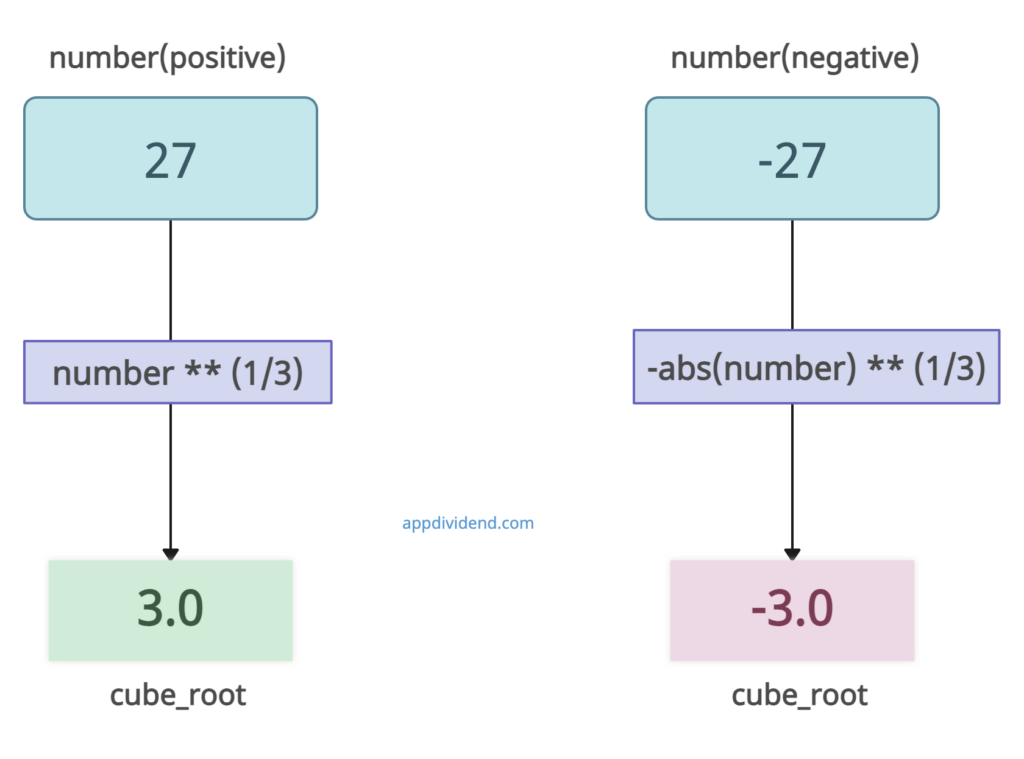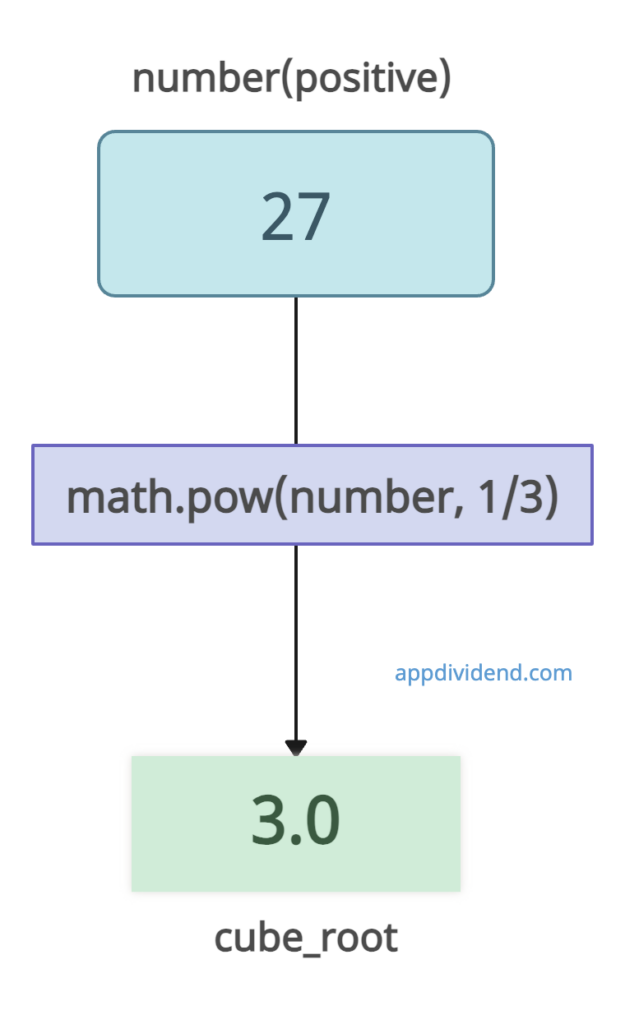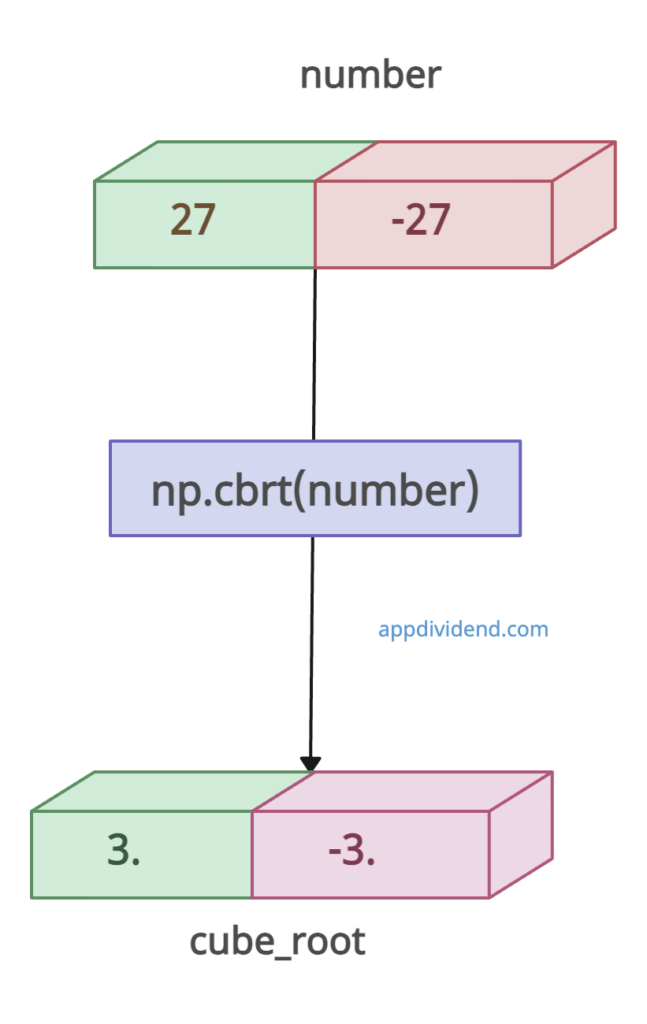Here are three ways to find a cube root in Python:
- Using exponentiation operator(**)
- Using math.pow()
- Using numpy.cbrt()
Method 1: Using exponentiation operator(**)
The most straightforward method is to use the exponentiation operator (**), which raises the number to the power of 1/3.
Visual Representation
Example 1: For Positive Numbers
# Number to find the cube root of
number = 27
# Calculating the cube root
cube_root = number ** (1/3)
print("The cube root of", number, "is", cube_root)Output
The cube root of 27 is 3.0Example 2: For Negative Numbers
If your number is negative, you can use the abs() function to get the absolute value and then then apply the negative sign.
number = -27
# Calculating the cube root for negative numbers
cube_root = -abs(number) ** (1/3)
print("The cube root of", number, "is", cube_root)Output
The cube root of -27 is -3.0Method 2: Using math.pow()
The math.pow function is used to raise number to the power of 1/3.
Visual Representation
Example
import math
number = 27
cube_root = math.pow(number, 1/3)
print("Cube root of", number, "is", cube_root)Output
Cube root of 27 is 3.0Method 3: Using numpy.cbrt()
The np.cbrt() method is used to calculate the cube root of every element of the array.
Visual Representation
Example
import numpy as np
# Define an array of numbers
number = [27, -27]
# Calculating the cube root of each element in the array
cube_root = np.cbrt(number)
# Printing the original array and their cube roots
print("Cube root of", number, "is", cube_root)Output
Cube root of [27, -27] is [ 3. -3.]




Sheif
This doesn’t work with some numbers. Like it won’t work with 64 as 64 ^ (1./3) is 3.9999999.
Krunal
You’re correct about the limitations of floating-point arithmetic in computers.
You can round the result to a certain number of decimal places like this:
print(round(64 ** (1./3), 10))
Output: 4.0